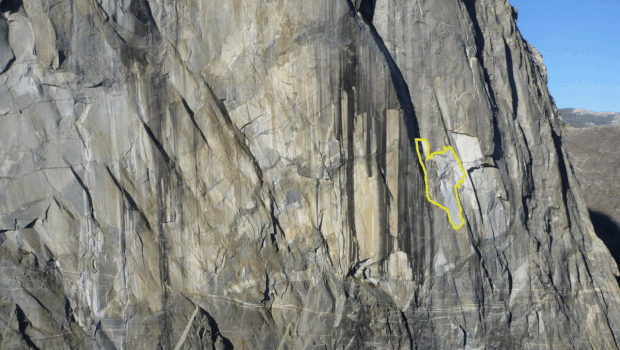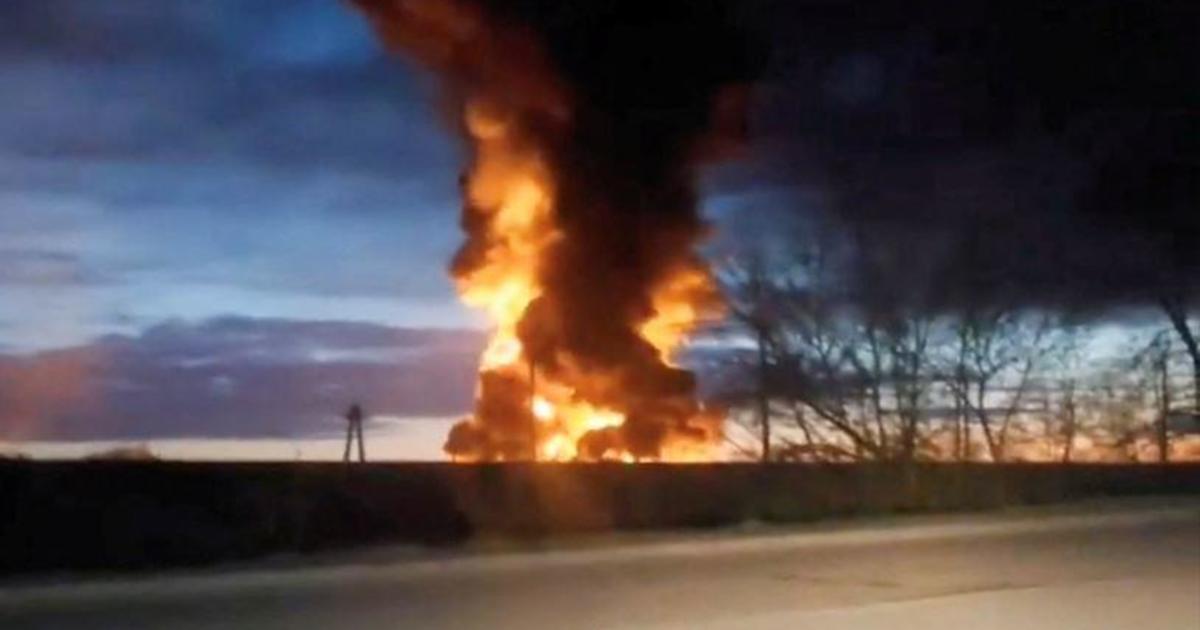Yosemite hit by "substantially bigger" rock fall day after deadly slide
SAN FRANCISCO -- Two days of cracking, thundering falling rock at Yosemite National Park have left one man dead, two people injured, and even experienced climbers stunned by the spectacle.
A massive new hunk of granite broke off Thursday at the park's mountaineering mecca of El Capitan, injuring an elderly man and sending huge plumes of white dust.
"There was so much smoke and debris," said climber Ryan Sheridan, who had just reached the top of El Capitan when the rock let loose below him. "It filled the entire valley with smoke."
Ken Yager, president and founder of the Yosemite Climbing Association, said he witnessed Thursday's rock fall, which appeared to be "substantially bigger" than the earlier one.
The slide came a day after a giant slab of granite plunged from the same formation, killing a British man on a hiking and climbing visit and injuring his wife.
"It was in the same location of the previous rock fall," Sheridan told The Associated Press by cellphone from the mountain. "A larger rock fall let loose, easily three times the size," Sheridan said.
One person was injured and was flown to a hospital, park ranger and spokesman Scott Gediman said. There was no immediate word on the person's condition.
Officials didn't identify the person, but an older man with cuts and scrapes on his face and head was being treated by paramedics after the slide.
Meanwhile, the man killed Wednesday was identified as Andrew Foster, 32, of Wales. The park didn't identify his wife, but said she remained hospitalized.
The park indicated that seven rock falls actually occurred during a four-hour period Wednesday on the southeast face of El Capitan. However, it was rare for such a collapse to kill anyone, longtime climbers said Thursday.
A reporter from the CBS Fresno affiliate KGPE-TV captured Thursday's rock fall and described it as "thunderous."
Rocks at the world-renowned park's climbing routes break loose and crash down about 80 times a year. The elite climbers who flock to the park using ropes and their fingertips to defy death as they scale sheer cliff faces know the risk but also know it's rare to get hit and killed by the rocks.
"It's a lot like a lightning strike," said Alex Honnold, who made history June 3 for being the first to climb El Capitan alone and without ropes. "Sometimes geology just happens."
The last time a climber was killed by a rock falling at Yosemite was in 2013, when a Montana climber fell after a rock dislodged and sliced his climbing rope. It was preceded by a 1999 rock fall that crushed a climber from Colorado. Park officials say rock falls overall have killed 16 people since 1857 and injured more than 100.
The British man and his wife were hiking at the bottom of El Capitan far from trails used by most Yosemite visitors in preparation for an ascent when the chunk of granite about 12 stories tall broke free and plunged, said park ranger and spokesman Scott Gediman. He died and she was seriously injured. Authorities didn't identify them, pending notification of their relatives.
The slab itself was about 130 feet tall and 65 feet wide and fell from the popular "Waterfall Route" on the East Buttress of El Capitan, Gediman said.
Canadian climber Peter Zabrok described the falling rock as "white granite the size of an apartment building." Images posted on social media immediately after it fell showed billowing white rock dust soaring high into the air.
Yosemite geologist Greg Stock said the rock fall wasn't caused by climbers, who wedge climbing gear into rock cracks so they can loop ropes to support their weight and the cliff-side tents they use for El Capitan climbs that generally take several days.
While the cause of the rock fall will never be known, Stock said the break was probably caused by the expansion and contraction of the monolith's granite as it heats up during the summer and gets cold and more brittle in the winter.
"The rock fall its self is nothing unusual," he said. "We have had larger rock falls occur in the Valley this year."
The deadly rock fall happened during the peak fall season for climbing El Capitan, when climbers from around the world converge at Yosemite because of warm weather and long climbing days.
Climber John DeGrazio had just guided a group to the top of the Half Dome rock formation a few miles away when he saw large clouds of dust rising into the air near El Capitan. At least 30 climbers were on the wall of the 7,569-foot formation when the rock fell.
"I've seen smaller avalanches and smaller falls before where you would just see a tiny dust cloud, this was covering a good portion of the rock in front of us," said DeGrazio, of YExplore Yosemite Adventures, who has led climbers in Yosemite Park for 12 years.
Ken Yager, president and founder of the Yosemite Climbing Association, the rock that broke away "cratered and sent stuff mushrooming out in all directions."
Zabrok said he saw a rescuer lowered by helicopter and thinks he saved a survivor. He later saw rescuers moving someone on a litter.
The effort to save the two "was done at tremendous peril to the rescuers because there were three subsequent rock falls that were all nearly as big and would have killed anybody at the base," he said.
Gediman, the park spokesman, said the rock fall was among seven that happened in the same general area during a four-hour period. Rescuers found no other victims.
Officials had no immediate estimate for how much the big rock weighed but Gediman said all of the rock falls combined on Wednesday weighed 1,300 tons (1,100 metric tons).
Climber Kevin Jorgeson saw a massive rock fall in the same area while preparing for a 2015 climb of El Capitan. It was preceded by a rumble and followed by a white dust cloud.
"Yosemite is just a really active, wild place. It's always changing," Jorgeson said.





